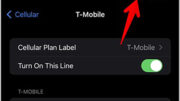Here’s one thing we all all agree on: We want to charge our phones quickly. But how can you know it’s safe? It’s confusing.
The most common terms you’ll hear when you talk about charging a cell phone are Qi and QC. A lot of people think Qualcomm Quick Charging (QC) is the same as the Wireless Power Consortium’s Qi standard. After all, how many things start with Q anyway, and both of them have to so with cell phones. So, you can be forgiven for thinking they’re the same thing. Let’s talk about why they aren’t.
It’s the wire.
Qi is a wireless charging standard. It’s designed to let you put your phone down, without even having to plug it in, and then it just charges for you. However, because of the way that wireless charging works, it’s never going to be the fastest way to charge your phone. You lose a certain amount of energy when you broadcast wirelessly, that’s always going to be true.
Qualcomm’s Quick Charging (QC) standard isn’t about convenience, it’s about speed. If you are willing to hook that phone up to a wire, it’s about giving you the fastest charge there is. And it does so as smartly as possible, and (for the most part) as safely as possible.
Watt’s the buzz, tell me watt’s happening.
A watt is a useful measure of the power that’s actually getting to a device. I could get really detailed, but for the most part just think that more watts=faster charging.
The original USB standard always let you power things, but the amount of power isn’t very big. If you connect up to a standard USB 1.1 port, you’ll get a maximum of 2.5 watts which is enough to power a keyboard or a very efficient hard drive but it’s a paltry amount of power really. Connect the “cube” charger supplied with most phones and you’ll get 7 watts. Obviously better but we want more. Connect the fast charger that comes with an iPad or top-end Samsung device and you’ll get 12-15 watts. Now we’re talking.
Qualcomm’s Quick Charging aims to get even further. Some devices can use up to 45 watts of power to charge and if you do the math that will tell you that potentially, your phone is charging about 6 times faster.
Just one thing…

You have to be careful when you put a lot of power into a confined space like a battery. It’s never a perfect transfer and two things will always happen. As the battery receives power, it’s going to swell up somewhat as the energy makes the battery’s atoms move around. Also, the faster you put that energy in, the more heat is going to be generated as a waste product. If you put too much power into a battery too fast, as Samsung found out with its Galaxy Note 7, it all goes boom.
That’s where QC comes in.
QC is built into Qualcomm’s phone CPUs and it intelligently monitors everything to make sure that as much power gets to the phone as possible and still doesn’t cause it to turn into a little hand grenade. Because a lot of Android phones use Qualcomm’s Snapdragon CPUs, they get the QC technology at the same time.
QC is available right now in two versions: QC 2.0 and QC 3.0. QC 2.0 is the most common and it’s what you’ll find in Samsung’s latest phone. This standard allows for three different voltages to be used, (5, 9 and 12) and that means three different speeds of fast charging. QC 2.0 phones can also charge at regular speed and “slow” (USB 1.1) speed so that’s five different options that the QC processor can use to provide the most power safely. If you have a QC 2.0 phone you might notice that it says “fast charging, slow charging,” or just “charging” depending on where it’s plugged in. That information lets you know whether or not the charger and cable are capable of providing enough power for QC 2.0 to use all its tricks.
QC 3.0 is even fancier, because it allows for variable voltage from 3.2 – 20 volts, meaning that the phone is always going to charge at the fastest possible speed. There’s also QC 4 and QC 5, which up the ante even more. Qualcomm says with QC 5, you can theoretically charge a phone up to 50% safely in just 5 minutes.
You need the right charger.
In order to supply enough power for quick charging, you need a power adapter that supplies the right number of volts, amps, and watts. You can see the rated voltage and amperage in tiny letters on the charger. If you want to quick charge, look for some sort of certification. There are still plenty of QC 3.0 chargers out there, but you’ll have a little tougher time finding QC 4 and QC 5.
While it’s possible to do QC with an old MicroUSB connection, the MicroUSB standard doesn’t really support quick charging so that’s why you find QC almost exclusively on USB-C.
Will Apple adopt QC?
I’m sure at this point you’re aware that Apple has recently moved to USB-C for its iPhones. This means at this point you’re finally seeing USB-C across virtually all modern devices. However, Apple is still behind in adopting the latest QC standard. Even with a 20 watt charger, Apple’s phones will not charge as fast as premium Android phones. Granted, Apple really wants you to use wireless charging. Also granted, even without QC 5, you can still charge a completely empty phone to 50% within half an hour, and that’s not altogether bad.
If you’re looking for cellular accessories, cell phone signal boosters, or even cell phone plans, call the experts! We’re here for you during East Coast business hours. Just call 888-233-7563 or fill out the form below.





